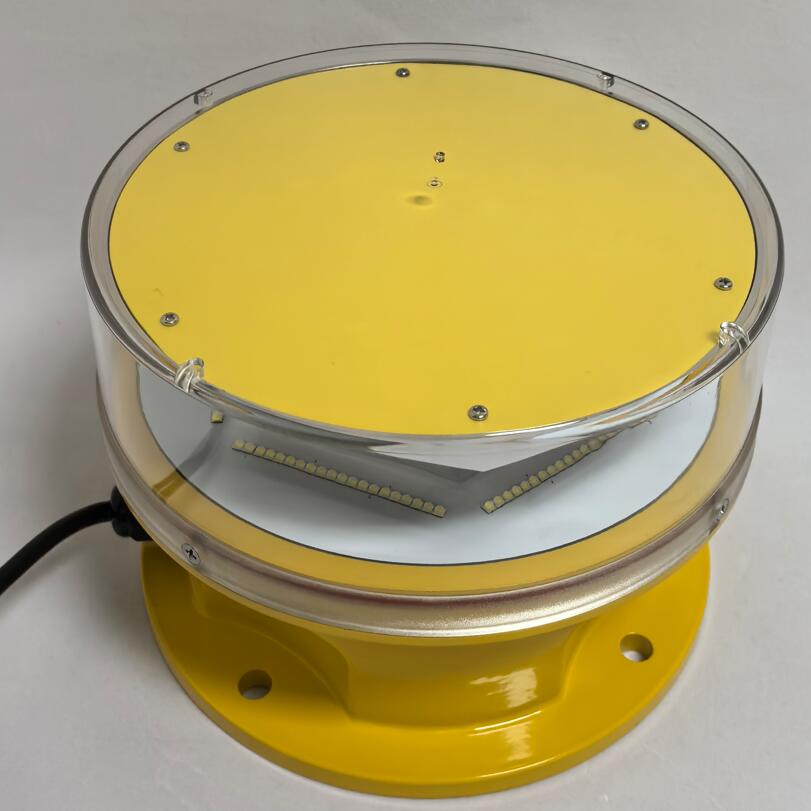Airports are complex environments where safety is paramount. Among the many safety measures in place, obstruction lights play a crucial role in preventing accidents and ensuring smooth operations. These lights mark hazards such as towers, buildings, and other structures that could pose risks to aircraft, especially during low visibility conditions. This article explores the importance, types, and regulations surrounding obstruction lights at airports.
Why Obstruction Lights Are Essential
The primary purpose of obstruction lights is to enhance visibility. Pilots rely on visual cues to navigate, particularly during takeoff, landing, and low-altitude flight. Without proper lighting, tall structures near airports could become collision hazards.
Key reasons why obstruction lights are indispensable include:
Preventing Collisions – By illuminating obstacles, these lights help pilots avoid dangerous structures, reducing the risk of accidents.

Regulatory Compliance – Aviation authorities mandate the use of obstruction lights on certain structures to meet safety standards.
Night and Low-Visibility Operations – During fog, rain, or darkness, these lights ensure that obstacles remain visible.
Supporting Air Traffic Control – Properly lit structures assist air traffic controllers in managing flight paths effectively.
| obstruction light airport |
Types of Obstruction Lights Used at Airports
Different types of obstruction lights are used depending on the height and location of the obstacle. The main categories include:
1. Low-Intensity Obstruction Lights
Used for structures below 45 meters (148 feet).
Typically red and steady-burning.
Common on small buildings, cranes, or utility poles near airports.
2. Medium-Intensity Obstruction Lights
Required for structures between 45 and 150 meters (148–492 feet).
| obstruction lights airport |
Can be red or white, flashing or steady.
Often installed on communication towers or airport perimeter structures.
3. High-Intensity Obstruction Lights
Used for obstacles exceeding 150 meters (492 feet).
Bright white flashing lights for maximum visibility.
Found on tall towers, skyscrapers, or wind turbines near flight paths.
4. Dual Lighting Systems
Combine red lights for nighttime and white strobes for daytime.
Ensures visibility under all lighting conditions.
Regulations Governing Obstruction Lights
International and national aviation authorities set strict guidelines for obstruction lights to maintain uniformity and safety. Key regulatory bodies include:
ICAO (International Civil Aviation Organization) – Provides global standards for obstruction lighting.
FAA (Federal Aviation Administration, USA) – Defines requirements for lighting and marking obstacles.
EASA (European Union Aviation Safety Agency) – Regulates aviation safety across Europe.
Common regulations include:
Proper spacing and placement of lights.
Specific color and flash patterns.
Backup power systems to ensure continuous operation.
Technological Advancements in Obstruction Lighting
Modern obstruction lights incorporate advanced technologies to improve efficiency and reliability:
LED Lights – More energy-efficient and longer-lasting than traditional incandescent bulbs.
Solar-Powered Systems – Reduce dependency on electrical grids, ideal for remote locations.
Smart Monitoring – Sensors detect malfunctions and alert maintenance teams automatically.
Aircraft Detection Lighting Systems (ADLS) – Lights activate only when an aircraft is nearby, reducing light pollution.
Challenges and Future Trends
Despite their importance, obstruction lights face challenges such as:
Light Pollution – Bright lights can affect nearby communities; solutions like ADLS help mitigate this.
Maintenance – Regular inspections are necessary to ensure functionality.
Weather Resistance – Lights must withstand extreme conditions like storms and high winds.
Future trends may include:
Increased Automation – AI-driven systems for predictive maintenance.
Enhanced Durability – More robust materials to extend lifespan.
Eco-Friendly Designs – Further adoption of solar and low-energy lighting.
Obstruction lights at airports are a critical component of aviation safety, ensuring that pilots can navigate safely around potential hazards. With evolving technology and stringent regulations, these lighting systems continue to improve, enhancing both safety and efficiency. As airports expand and urban areas grow, the role of obstruction lights will only become more vital in preventing accidents and safeguarding air travel.